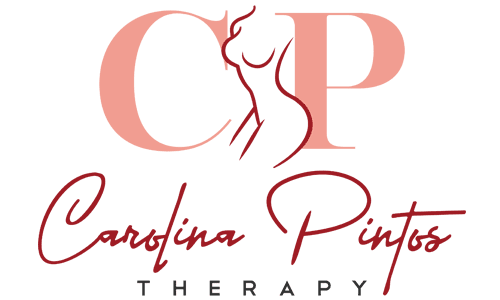Lymphatic Drainage Massage
Discover the exceptional healing of our Brazilian Lymphatic Massage, distinctively utilizing the Vodder method, a medical-grade lymphatic technique. Our advanced anatomical knowledge elevates our therapy above our competitors, ensuring unparalleled precision and effectiveness in each session. We are here to set a new standard in therapeutic care.
We Are Recommended by
Houston’s Top Doctors
And Voted Best in Class by

&

Helps Detox And With Blood Circulation
Improves Immune System And Metabolism
Reduces Swelling And Fluid Retention
Our Lymphatic Services

Our clinic is conveniently located on the west side of Houston in the Energy Corridor, accessible to those in Katy, Spring, Sugar Land, Bellaire, and other surrounding areas.
Body Manual Lymphatic Drainage
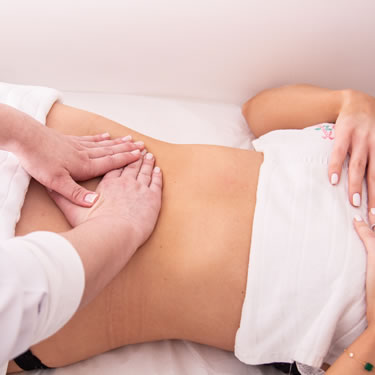
Revitalize with our Lymphatic Massage, designed to relieve fatigue, insomnia, fibromyalgia, bloating, and more. This massage, with its gentle, rhythmic technique, improves lymph flow and detoxification, enhancing your metabolism.
Note: This massage excludes the face and neck. For these areas, please book a Facial Lymphatic Massage.
Body Manual Lymphatics Drainage Session
713-474-4774
*Get $15 OFF on your 4th visit
with our loyalty program!
Facial Lymphatic Drainage
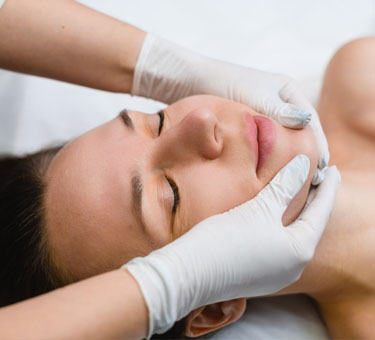
Our Facial Lymphatic Massage targets congestion, sinus issues, and facial puffiness, including under-eye bags. It provides migraine and ear congestion relief, rejuvenates your skin’s glow, and revitalizes your overall appearance.
Facial Lymphatic Drainage Session
50 Minutes
713-474-4774
*Get $15 OFF on your 4th visit
with our loyalty program!
In-Home Lymphatic Drainage
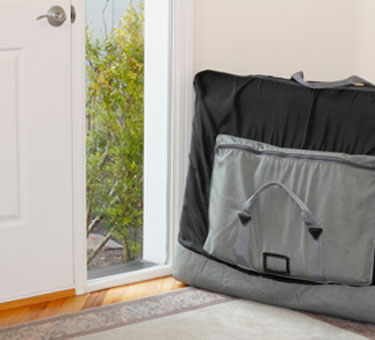
Experience the convenience of our in-home Manual Lymphatic Drainage service. Our skilled therapists bring this revitalizing massage directly to you, enhancing lymphatic circulation and wellness in the comfort of your home.
In-Home Lymphatic Drainage Session
713-474-4774
*Get $15 OFF on your 4th visit
with our loyalty program!

Give a Gift of Healing
An eGift card for a lymphatic massage is a thoughtful and effortless way to show you care.
What makes our approach unique?
Advanced Training & Anatomical Expertise: Our clinic’s excellence in lymphatic massage therapy stems from a stringent selection and training process. Therapists joining our team are not only experienced, with a minimum of five years in practice, but also must complete a specialized lymphatic drainage course and earn their certification. Following this, they engage in an intensive apprenticeship program under Carolina Pintos, who imparts her expertise in injury rehabilitation and post-operative care. This rigorous training ensures our therapists are exceptionally skilled in lymphatic drainage, groomed meticulously to provide the highest standard of patient care.
Vodder Technique Proficiency: Our team is trained in the Vodder technique, a medically-endorsed method that enhances lymph flow and aids tissue drainage. This specialized technique, rooted in scientific principles, sets our therapists apart in their ability to provide effective, targeted treatments.
Dual Certification and Medical-Grade Approach: Each therapist holds dual certification in massage and lymphatic drainage, ensuring a comprehensive approach to each treatment.
Rewards Program
Earn Points
Join our rewards program and earn a point every time you book an appointment at our clinic.
Earn Discounts
Get $15 OFF after your 4th visit!
Redeem Points
Use your discount immediately, or convert your rewards into gift cards for friends or family.
Praises By Our Patients
The Lymphatic System
Elevate Your Immune System
The lymphatic system is essential for immune function and fluid balance. It transports lymph, containing white blood cells, throughout the body, aiding in waste removal, dietary fat transportation, and fluid regulation.
Unlike the circulatory system, which is powered by the heart, the lymphatic system relies on muscle contractions and physical activity to move fluid through the body. When the lymphatic system is impaired, fluid builds up in the tissue causing bloating and sluggishness as the body’s normal functions are delayed.
This is why many doctors recommend lymphatic drainage massage, a therapeutic technique that uses gentle, rhythmic strokes to stimulate the movement of lymphatic fluid and unblock congested areas, improving the function of the system.
Lymphatic massage is particularly beneficial for those with lymphatic dysfunction or at risk of developing lymphedema, a condition characterized by fluid accumulation and swelling in the tissue. In addition to improving the function of the lymphatic system, it reduces stress, improves sleep, and boosts the immune system, making it a valuable option for overall health and wellness.
The lymphatic system circulates extracellular fluid and relies on muscle contractions and activity for movement. Impairments can cause fluid buildup and sluggishness, making lymphatic massages a recommended therapy to stimulate fluid movement and improve system function. Lymphatic massage is especially useful for those with lymphatic dysfunction or at risk of lymphedema, and can also reduce stress, improve sleep, and boost the immune system.
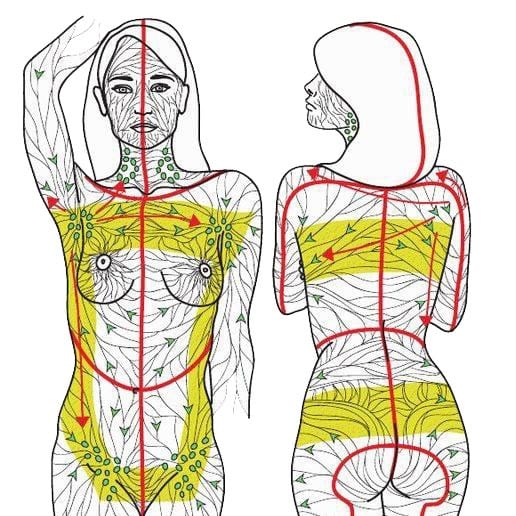
Frequently Asked Questions (FAQ)
Q: Who would benefit most from getting a Body Lymphatic Drainage?
A: Body lymphatic drainage is ideal for those:
- Individuals looking for detoxification.
- Individuals recovering from surgery.
- Chemotherapy patients.
- People with fibromyalgia.
- Individuals with autoimmune diseases.
- Patients with lymphedema.
- Individuals with chronic fatigue syndrome.
- Patients with digestive issues.
- People with insomnia, stress, or anxiety.
- Athletes looking for faster recovery post-training or events.
- Those in weight loss programs to enhance circulation and metabolism.
- Pregnant women seeking relief from swelling and discomfort.
- Elderly individuals aiming to improve circulation and general wellness.
- People suffering from joint stiffness or swelling.
Q: Who would benefit most from getting a Facial Lymphatic Drainage?
A: Facial lymphatic drainage is ideal for those:
- Individuals with chronic allergies.
- Those who have recently undergone dental surgery.
- People experiencing sinus problems.
- Clients who have had facial cosmetic surgery, such as rhinoplasty or chin liposuction.
- Individuals experiencing puffiness or swelling in the facial area.
- Those seeking to enhance skin clarity and reduce acne and other skin conditions.
- Clients with frequent headaches or migraines affected by sinus pressure.
- Those suffering from conditions like Bell’s palsy or other neurological issues affecting the face.
Q: What is the lymphatic system and what is lymphatic massage or Manual Lymphatic Drainage (MLD)?
A: The lymphatic system is a network of tissues and organs that aid in eliminating waste and toxins from the body. Its function is to transport lymph, a fluid containing infection-fighting white blood cells, throughout the body. The lymphatic system comprises vessels similar to those found in the circulatory system, which connects to lymph nodes where the lymph is filtered. Lymphatic drainage massage, also known as Manual Lymphatic Drainage (MLD), relieves swelling caused by an unhealthy lymphatic system. It’s important to note that regular lymphatic massage is different from post-surgery lymphatic massage.
Q: Is a lymphatic massage essentially the same as a deep tissue massage?
A: No. A deep tissue massage works on the muscular system, whereas a lymphatic massage targets the lymphatic system.
Q: Is lymphatic massage painful?
A: A lymphatic drainage massage or Manual Lymphatic Drainage (MLD), is a gentle massage technique that is not painful. The therapist uses light pressure and gentle, rhythmic strokes to stimulate the flow of lymph fluid and improve the functioning of the lymphatic system.
Q: Does lymphatic massage help with fibromyalgia?
A: Lymphatic drainage massage is a potential adjunctive therapy for individuals suffering from fibromyalgia. Fibromyalgia is a chronic condition characterized by widespread musculoskeletal pain, fatigue, and sleep disturbance. Lymphatic massage may reduce inflammation, improve microcirculation, and enhance the overall function of the immune system, all of which are common symptoms of fibromyalgia. Additionally, Lymphatic massage may have a positive impact on sleep and stress, which are also common issues for individuals with fibromyalgia.
Q: What are the symptoms of poor lymphatic drainage?
A: The following are symptoms of poor lymphatic drainage: Tiredness, insomnia, swelling in the arm or leg (including fingers or toes), a feeling of heaviness or tightness, restricted range of motion, recurring infections, and hardening or thickening of the skin (fibrosis).
Q: What is an lymphatic massage like?
A: After an initial consultation, you will undress, lie down on a massage table in the face-up position, covered with proper draping. The atmosphere is the same as a massage treatment room with dim lighting and soft music. Although you are in a massage setting, it is important to understand that a lymphatic massage is a specific form of bodywork designed to efficiently move lymph fluid in your body. Manual Lymphatic Massage (MLD) is completely different from deep tissue, Swedish, or relaxation massage that you may be expecting or have had in the past. Stimulation of the Lymphatic System activates the parasympathetic nervous system producing an automatic physiological relaxation response. Many clients fall asleep. Gentle, rotating, pumping motions with the therapist’s hands and fingertips begin at the collarbone area, then focus on areas where there is a concentration of lymph nodes (the underarms, abdomen, groin, and back of the knees). The session always starts face-up position because most of the areas of lymph nodes that need to be decongested are located on the front of the body. It is very important to decongest the areas of drainage in the groin, abdomen, underarms, and collarbone areas before sending extra lymph fluid to them.
Q: What health conditions can cause lymph fluid to build up?
A: Several situations and health conditions, such as stress, hormone imbalance, fibromyalgia, and lymphadenectomy, can cause lymph fluid buildup. Lymphatic drainage massages reduce swelling, improve circulation, and boost the immune system.
In addition to these specific benefits, lymphatic drainage massages can also provide a number of other benefits for people who receive them. For example, these massages can promote relaxation, as well as improve sleep and reduce fatigue. They can also help to improve flexibility and mobility, and may even help to reduce the appearance of cellulite.
Overall, lymphatic drainage massages are a safe and effective way to support the health and well-being of the body and can be beneficial for people with a variety of different health conditions.
Q: Will a lymphatic massage really work for me?
A: Yes. Patients typically feel a lot better after having just one lymphatic massage session. A typical sentiment after the lymphatic massage is feeling a reduction in swelling, an improved range of motion, and a general enhanced wellbeing.
Q: Does lymphatic massage help get rid of bruising?
A: Yes. That is one of the best applications of lymphatic massage. Bruises are an accumulation of cellular debris and old red blood cells in the tissue. Lymph Drainage Therapy greatly reduces the healing time for bruises by cleansing the extracellular spaces where these substances are trapped.
Q: How does a lymphatic massage differ from a post-surgery lymphatic massage?
A: Regular lymphatic massage and post-surgery lymphatic massage differ in several ways. Firstly, post-surgery lymphatic massage tends to be more targeted and focused, as it is specifically designed to help with swelling and inflammation that occurs after surgery. The therapist will often focus on areas where lymphatic fluid has accumulated or where lymph nodes have been removed, as these areas are more likely to experience swelling and inflammation.
Secondly, post-surgery lymphatic massage may involve more frequent sessions than regular lymphatic massage. This is because the body’s lymphatic system may be working overtime to clear away the excess fluid and toxins that accumulate after surgery. More frequent massage sessions can help keep the lymphatic system functioning properly and prevent the buildup of fluid in the affected areas.
Finally, post-surgery lymphatic massage may be more gentle and less invasive than regular lymphatic massage. The therapist will often use very light pressure and gentle strokes to encourage lymphatic fluid to move, as the affected areas may be sensitive and tender after surgery. In contrast, regular lymphatic massage may involve more vigorous and deeper pressure to help move lymphatic fluid throughout the body.
In conclusion, while regular lymphatic massage and post-surgery lymphatic massage share some similarities, such as their focus on improving lymphatic function, they differ in their approach, frequency, and intensity. It is important for patients to seek out a therapist who is experienced in post-surgery lymphatic massage and understands the unique needs and challenges of post-operative recovery.
Q: Do I need a prescription for a lymphatic massage treatment?
A: No. Although many doctors recommend lymphatic massage, it is also perfectly fine to self-refer.
